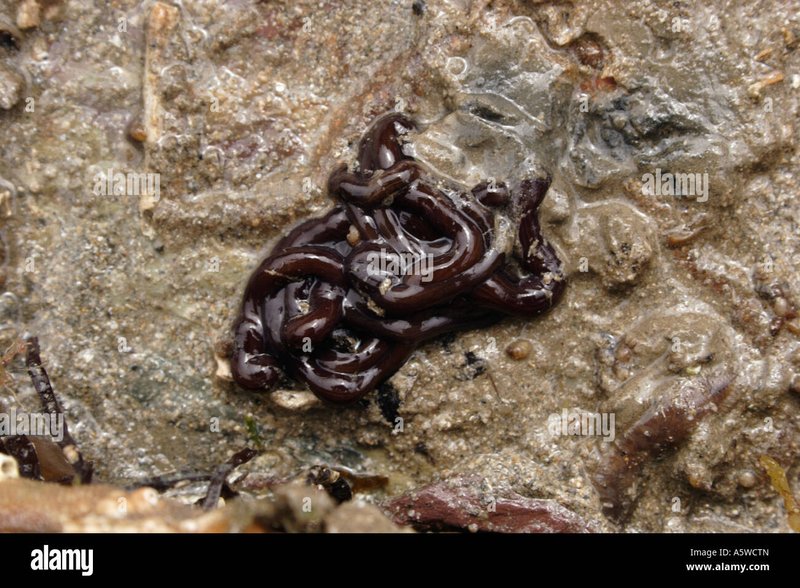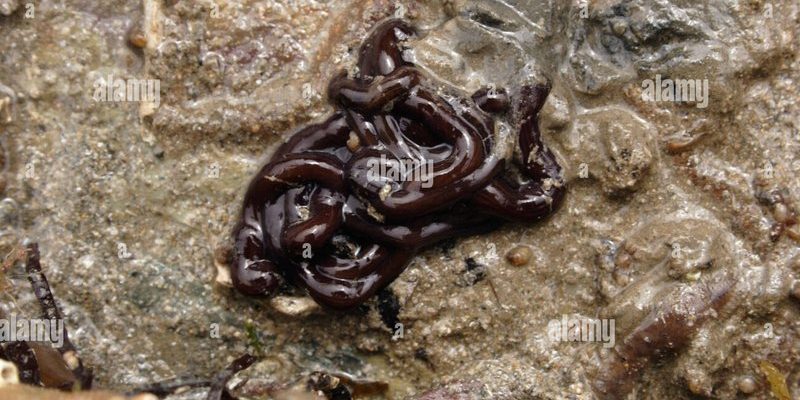
So, what’s the deal with these worms? Bootlace worms are not just ordinary worms; they belong to a group of marine creatures that have captured the imagination of anyone lucky enough to stumble across them. These lively inhabitants can be found weaving in and out of the sandy beds and rocky shores, leading many beachgoers to wonder about their role in the ecosystem and their curious life cycle. Let me explain a bit more about these surprising little fellows.
What Are Bootlace Worms?
Bootlace worms, or *Lineus longissimus*, are a species of marine annelid. If that sounds fancy, it just means they’re part of a larger family of worms known for their segmented bodies. The name “bootlace worm” comes from their long, slender appearance, which resembles a shoelace or bootlace. They can grow up to an astonishing 30 meters (or about 100 feet) long! Yes, you read that right—some can be longer than a double-decker bus!
These worms can often be found in marine environments such as sandy or muddy seafloors, often hidden beneath the surface. But don’t worry; if you dig around a bit, you might just spot one. They’re especially common in the cooler waters of the North Atlantic, so if you’re wandering along British or European shores, there’s a good chance you’ll cross paths with them.
Where to Find Bootlace Worms
If you want to see these fascinating creatures, you’ll need to head to the right spots. Bootlace worms thrive in various environments along British and European coastlines. They prefer areas with rich organic matter, so think of them as nature’s recyclers. Here are a few places to check out:
- Rocky Shorelines: Bootlace worms can be found hiding in crevices among the rocks, waiting for their next meal.
- Sandy Beaches: During low tide, you might spot them wriggling just below the surface or even washing up on shore.
- Estuaries: These areas, where fresh and saltwater mix, are prime habitats for bootlace worms, providing food and shelter.
The best time to look for these worms is during low tide when you can safely explore the exposed areas. Grab a bucket and a spade, and get ready for an adventure!
Life Cycle of Bootlace Worms
Bootlace worms have a fascinating life cycle that’s quite different from what most of us might expect. They reproduce sexually, which means they need a mate to make baby worms. When two bootlace worms meet, they exchange sperm, and after some time, the female lays her eggs in a protective cocoon. This can happen in deeper waters, and once the eggs hatch, the tiny larvae are released into the ocean.
You might be surprised to learn that these larvae don’t just sit around; they swim and live freely in the water column for a while before settling down and morphing into adult worms. As they grow, they seek out a suitable habitat, usually among sand or mud, to live out their lives. It’s a full-circle moment, as they’ll eventually reproduce and continue the cycle.
Feeding Habits
You might think that a worm’s diet is pretty basic, but bootlace worms are more exciting than that. They’re carnivorous, which means they feast on small organisms. With their long bodies and unique feeding strategies, they use their **tentacle-like projections** to capture prey, which includes small fish, crustaceans, and other tiny marine animals.
Here’s how they do it:
1. **Waiting:** Bootlace worms often stay hidden, camouflaged against the sea bed.
2. **Striking:** When a potential meal swims by, they can strike quickly, wrapping around their prey with their muscular bodies.
3. **Digesting:** Once they’ve secured a catch, they use digestive enzymes to break down the food before absorbing the nutrients.
This predator-prey relationship plays an essential role in maintaining the balance of the marine ecosystem.
Environmental Importance
Bootlace worms may be small, but they play a significant role in their ecosystems. They help to aerate the sediment on the ocean floor, allowing essential nutrients to circulate and benefit other marine life. Additionally, they’re a food source for various predators, including fish and seabirds.
By recycling organic material, bootlace worms contribute to the overall health of marine environments. When they break down dead matter, it adds nutrient-rich material back into the ecosystem, which supports plant life that other creatures rely on for survival. So, the next time you see a bootlace worm, remember it’s doing its part in the grand tapestry of ocean life.
Threats and Conservation
Like many marine species, bootlace worms face various threats due to changes in their environment. Issues like pollution, habitat destruction, and climate change can significantly impact their populations. For instance, rising temperatures can alter the availability of their food sources or even their breeding cycles.
Conservation efforts are essential to ensure that bootlace worms and other marine life can thrive. Here are some actions you can take to help:
- Reduce Plastic Use: Limit your use of single-use plastics to help keep the oceans clean.
- Support Marine Protected Areas: Advocate for the protection of local marine habitats.
- Get Involved: Join or support local beach clean-ups to keep shorelines pristine.
By being mindful of our impact on the environment, we can help preserve the habitats that bootlace worms and countless other marine creatures call home.
Bootlace worms are a vital part of coastal ecosystems in Britain and Europe. Their colorful, elongated shapes add a splash of life to the sandy shores, and their unique behaviors enhance marine biodiversity. Whether you’re exploring a rocky beach or digging through sandy shores, keep an eye out for these fascinating creatures.
Understanding bootlace worms helps us appreciate not just these remarkable organisms but also the rich tapestry of life that thrives beneath the waves. By respecting their habitats and supporting conservation efforts, we can ensure these awe-inspiring worms continue to wriggle and play their part in our oceans for generations to come.

